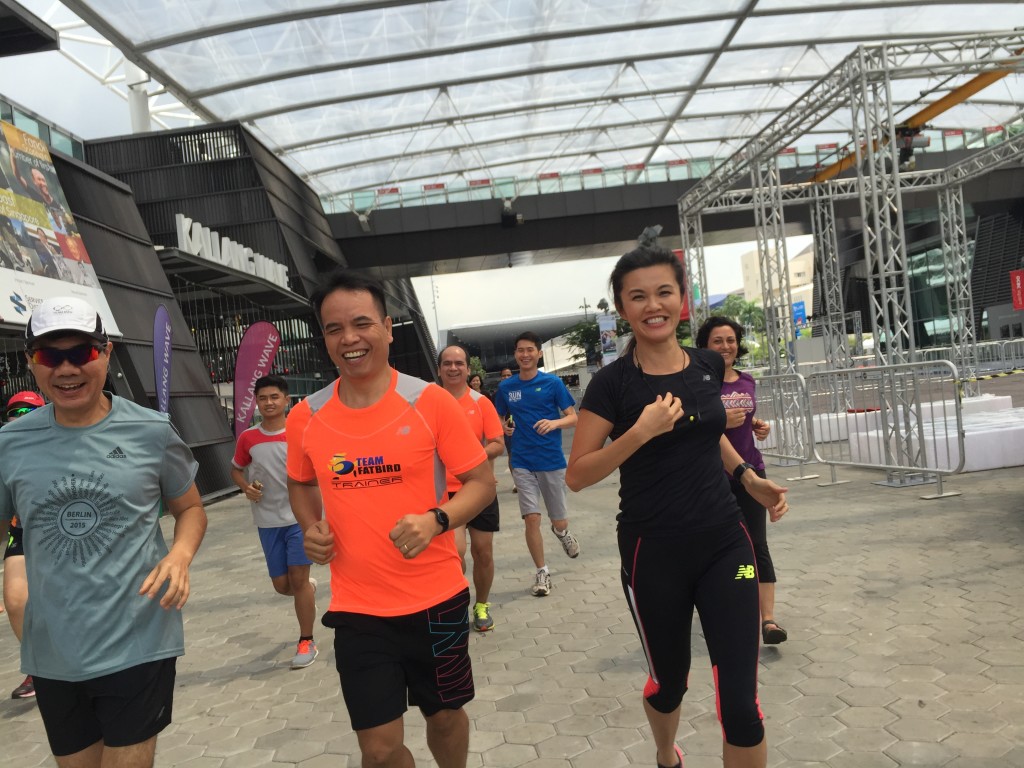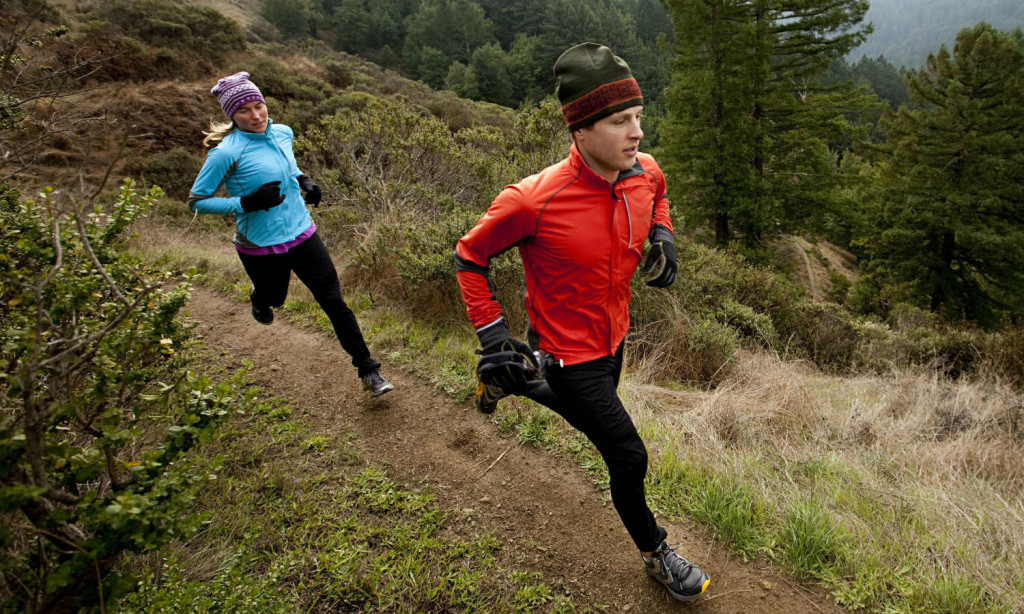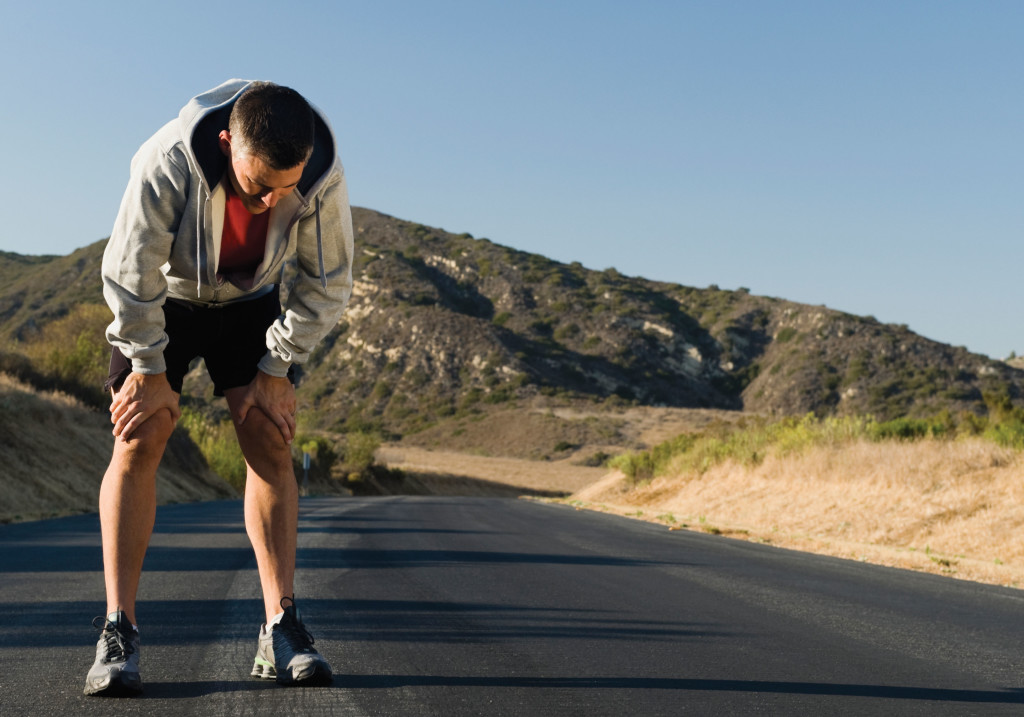During the weekend, Jabra and RunSociety, organised a running clinic with Jenny Huang – a mother, runner and physiotherapist – who gave an informative talk on running and also injuries.
A familiar face in the local running scene, some of Jenny’s running achievements have included coming in champion at the 2013 edition of the Sundown Ultra Marathon (100km). She also won the Great Eastern Women’s Run (21.1km) in 2014.
At the clinic, the runner, who is also a mother of two young children, shared some tips on running form and training, as well as sports injuries and their prevention.
Here are some highlights of what Jenny shared with the participants.
Running Form
According to Jenny, in order to run efficiently, your running form is important.
For starters, she said that it is important to run with your torso upright because this promotes optimum lung capacity and stride length. If you feel yourself beginning to slouch midway during a run, take a deep breath and your body should naturally straighten itself again.
At the same time, the arms should not be clenched and the fingers should lightly touch the palm of the hand. The elbows should be bent at 90 degrees too, and if you feel yourself getting tensed or about to clench your hands, try and shake this tension out by dropping your arms to your sides.
Having a good arm position is important because the arms help to drive you forward when running and control your stride length. So you should not be carrying thing such as plastic water bottles in your hands when running as this will affect your form.
For the head, it should be focused straight ahead and not tilted downwards. This helps to straighten out and align your neck and your back. Also do not jut your chin out too.
And when running, the shoulders should also be low and loose, not tight, and do not let them creep towards your ears as you get exhausted halfway during a run.
Foot Strike Techniques
Besides running form, Jenny also talked about foot strike techniques, that is, how your foot strikes the ground when running.
Our foot strike changes depending on our speed throughout a run. For example you may start running with a mid-foot strike but when you get more tired, you may end up doing a heel strike in the latter stages.
Between forefoot and heel striking, Jenny does not feel that either one is more superior. The only difference between the two, is where you land. For heel strikers, the force goes to the knees but for forefoot strikers, the force is in the calves.
Types of running
There are three important types of runs for marathoners, according to Jenny. These are:
Hill Runs – As the name suggests, these are runs that are done over hills. They add power to your running and at the same time, increases your aerobic capacity more so than running on flat ground. But the effort level when running both uphill and downhill should remain consistent.
Tempo Runs – These are runs whereby you are required to maintain a steady pace throughout the entire run and they train the body to use the glycogen stores that it has. For Jenny, listening to music personally helps on these runs, to stay focused on and maintaining the pace.
Long Runs – These are, as the name suggests, running for a long period of time. There are two types of long runs, according to Jenny. The first one stimulates the race that you will be running, that is, you run at your intended race pace for as long as possible. The other type focuses on time spent on your feet, for example, going out there and running for four hours regardless of pace.
Running Effort Levels
As a runner, you can’t simply go out there and purely run. It is important to internalise and be aware of your effort levels, according to Jenny. She said, “Take your long runs at an easy pace, but your tempo runs and intervals should be done at a hard pace, that is, a pace where you would not be able to hold a conversation.”
In the days leading up to a race, there is also the tapering phase where runners should sharpen their skills, that is, maintaining their speed but reducing the distance.
Said Jenny, “Tapering does not mean stopping completely.”
Also with each hard run that you do, make sure that you balance these out with rest days too. Said Jenny, “Take it easy during the rest day otherwise you will mess up your other runs.”
Injury Prevention
To remain injury free as a runner, Jenny said that it is very important to do warm-ups prior to running. This is because running activates your muscles and joints, so that they are not so stiff when you begin working out. She recommends dynamic stretches compared to static ones because dynamic stretching helps to prepare your muscles better in terms of intensity and type of workout. Thus it maximises your performance levels and at the same time reduces injury risk.
Also do not add more than 10 per cent to your weekly mileage, especially for weekend warriors, as this is also a common cause of injuries amongst many runners – according to Jenny.
We should also regularly change the terrain that we run on to prevent injuries, according to Jenny. For example you should do some running on roads, some on trails and others on the track. This is because doing so works different leg muscles, thus putting less stress on the legs.
Types of injuries and getting injured
The common types of injuries, according to Jenny, are as follows.
Runners Knee – Also known as Patellofemoral pain syndrome, this injury happens when the kneecap becomes irritated or inflamed and is caused commonly by weak hip muscles.
Achilles Tendonitis – This occurs when the Achilles Tendon, which connects the back of your leg to your heel, becomes swollen or painful. It is commonly caused by increasing your mileage too fast too soon.
Hamstring Injuries – These happens when you strain or pull your hamstring muscles, which are a group of three muscles that run down the back of your thigh. They are usually caused by over-striding when running.
Plantar Fasciitis (PF) – A common cause of heel pain amongst runners, this occurs when the plantar fascia, a thick band of tissue that runs through the bottom of the foot connecting the heel to the toe, becomes inflamed and painful. If you are struck down with PF, you need to rest for six months according to Jenny.
Shin Splints – These occur when there is pain along the inner edge of the shin bone (tibia), the biggest bone in the front of your lower leg. They are commonly seen in runners who have a weak foot arch.
Illiotibial band syndrome (ITBS) – This occurs when the Illiotibial band which runs from the hip to the thigh and shin, becomes inflamed.
Stress Fracture – This is a niggling bone pain in the leg that feels tender to the touch and can develop into something much worse if you do not seek treatment immediately.
Explained Jenny, “In fact, anything throbbing, piercing or a sharp dull pain is not something to mess around with. If something hurts for more than two weeks, seek medical treatment immediately.”
And once you have sustained an injury, according to the runner, you should ice it for the first couple of days – if it is a muscle-related injury. You can self-treat it at first, but if there is no sign of improvement, then Jenny strongly recommends that you go and see a doctor for treatment.








Leave a Comment